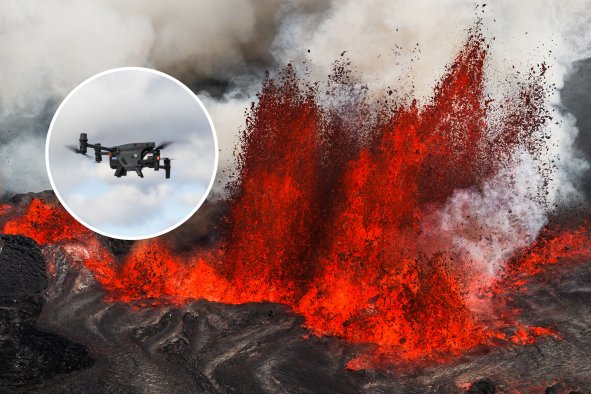Scientists have spotted two gases in Venus's atmosphere that may be the fingerprints of life on our hostile neighbor.
Phosphine gas and ammonia gas have been detected in the planet's thick, hot atmosphere, according to some preliminary data, astrophysicists announced at the Royal Astronomical Society's National Astronomy Meeting in England on Wednesday.
Both of these gases cannot easily be explained by atmospheric or geological phenomena on Venus, meaning they could be possible biosignatures.
"Preliminary analysis of new observations with a new receiver on the James Clerk Maxwell Telescope (JCMT), taken as part of the JCMT-Venus project, has confirmed the presence of phosphine and are hinting at larger amounts closer to the clouds," Dave Clements, an astrophysics researcher at Imperial College London, told Newsweek.
"At the same time, observations with the Green Bank Telescope (GBT) at longer radio wavelengths are hinting at the presence of ammonia in Venus' atmosphere, as well."
These are very preliminary findings and are yet to be published in a peer-reviewed journal.
Venus is one of the most extreme and hostile environments in our solar system. Its atmosphere is composed primarily—about 96.5 percent—of carbon dioxide, followed by 3.5 percent nitrogen and trace amounts of sulfur dioxide, water vapor, and carbon monoxide. Higher in the atmosphere, there are thick clouds of sulfuric acid.
Venus's surface has an atmospheric pressure about 92 times that of Earth's at sea level, and its surface temperature is extremely high, averaging around 872 degrees Fahrenheit. This intense heat is due to the greenhouse effect, caused by the dense CO2 atmosphere trapping heat from the sun.
According to the scientists' preliminary findings, phosphine gas and ammonia gas were detected at "part per billion to part per million levels," which is an incredibly small amount.
On Earth, phosphine gas is only made in significant amounts by bacteria living in low-oxygen environments, meaning that it is often considered a marker of life.
"They're possible biosignatures since producing these compounds of phosphorous (for phosphine) and nitrogen (for ammonia) in the oxidizing atmosphere of Venus is very difficult for normal, known chemical processes. On Earth, these two gases are largely produced by life or human industry, and phosphine has been suggested as a biomarker for planets orbiting other stars," Clements said.
Some have theorized that life could survive high up in Venus's clouds, where the temperature and pressure are more akin to that on Earth. However, no evidence of this hypothetical life has ever been found.
However, there may have been other ways that these gases came to be in Venus's atmosphere.
"We're not claiming to have detected life, but we do not know the chemical routes through which they might be produced—everything we've explored so far for phosphine at least (ammonia has yet to be looked at in detail) hasn't been capable, but there may well be things we haven't thought of yet," Clements said.
For now, the researchers will continue to analyze their early data and investigate how these gases may have appeared on this roiling-hot planet.
"We have a lot of data from JCMT-Venus to process and digest before we can put the re-detection of phosphine on a solid footing. Ditto ammonia," Clements said.
"And we have more data coming from a range of observatories. Elsewhere, there are plans for new missions to Venus, some of which will be able to explore the presence of ammonia and phosphine and how they might be produced—chemically or biologically.
Whether these gases are traces of far-off life or not, these findings have excited the astronomical community.
"These are very exciting findings, but it must be stressed that the results are only preliminary and more work is needed to learn more about the presence of these two potential biomarkers in Venus's clouds," Robert Massey, the deputy executive director at the Royal Astronomical Society who was not involved in the research, said in a statement.
"Nevertheless, it is fascinating to think that these detections could point to either possible signs of life or some unknown chemical processes. It will be interesting to see what further investigations unearth over the coming months and years."
Do you have a tip on a science story that Newsweek should be covering? Do you have a question about Venus? Let us know via science@newsweek.com.
Disclaimer: The copyright of this article belongs to the original author. Reposting this article is solely for the purpose of information dissemination and does not constitute any investment advice. If there is any infringement, please contact us immediately. We will make corrections or deletions as necessary. Thank you.



